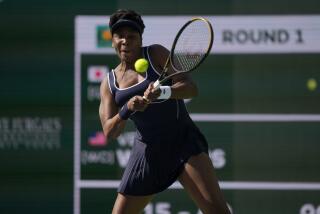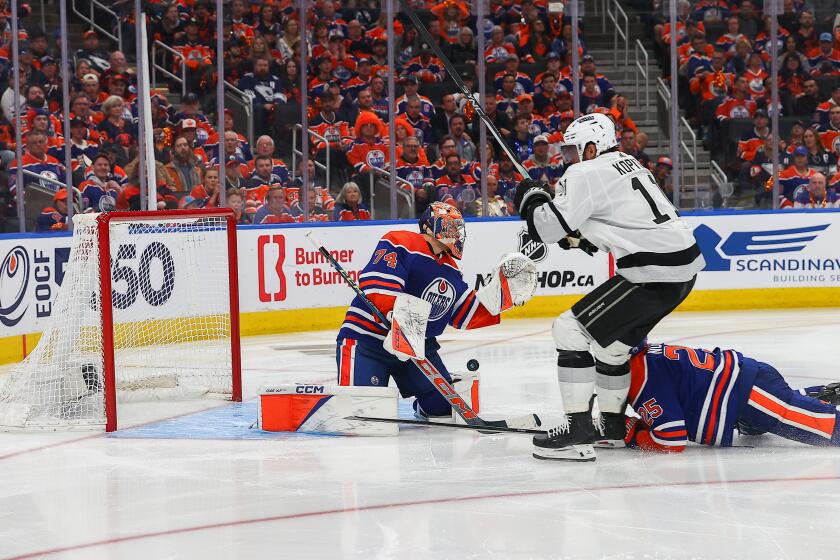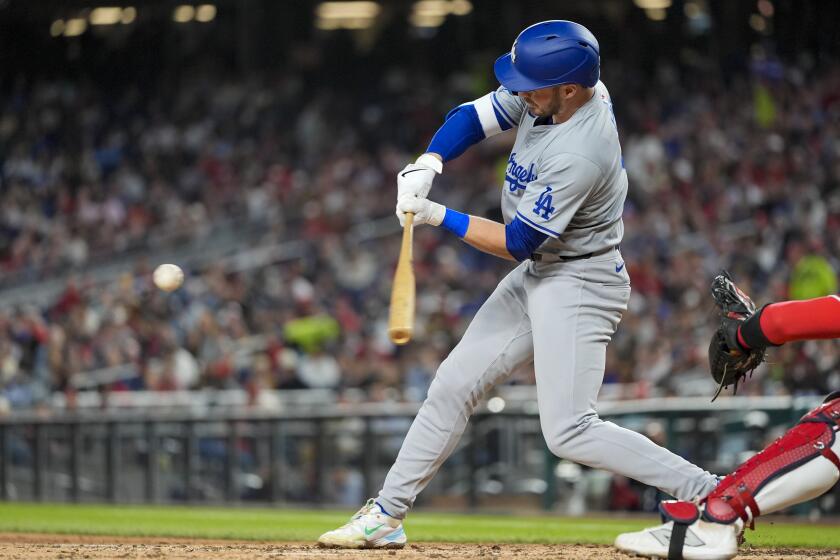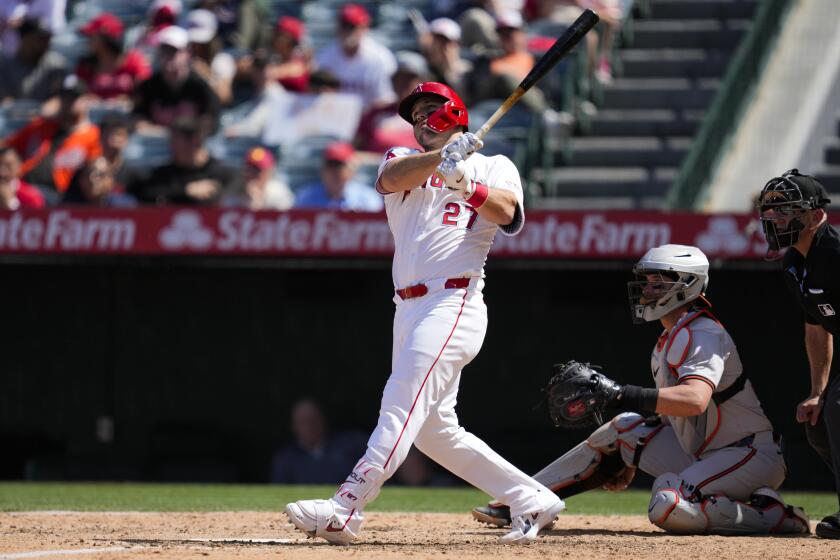Column: John Isner out, as is U.S. in Wimbledon 3rd round, a first since 1911
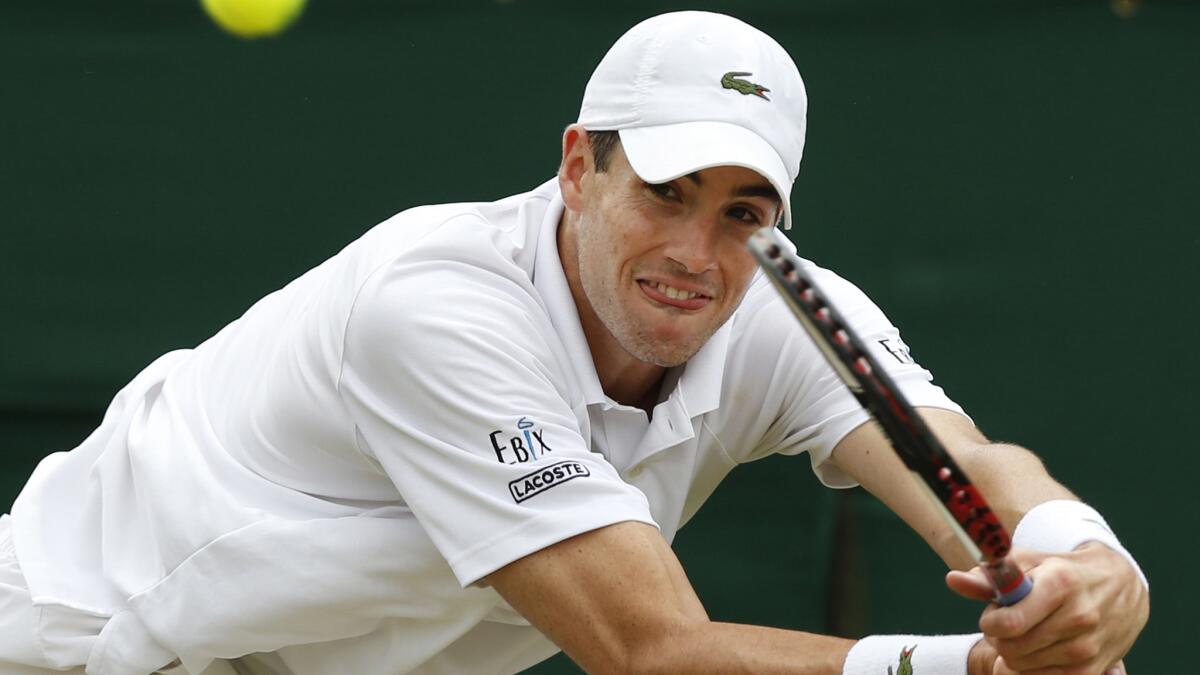
The clock had ticked to one minute past 4 p.m. here Monday, and the last American standing at Wimbledon wasn’t standing anymore.
John Isner, head hung low with body language that made him look closer to 6 feet than 6 feet 10, walked off Court 3, vanquished by Spaniard Feliciano Lopez.
It was a match that produced many stunning statistics. But the biggest statistical stunner spoke to a larger issue than merely Isner’s defeat.
When he lost, it marked the first time since 1911 that no U.S. player, male or female, advanced past the third round at Wimbledon.
So much for the U.S Tennis Assn.’s developmental programs. So much for young-and-hungry U.S. tennis. Hail to the Europeans, South Americans and Asians, who seem to want it more.
Somewhere, Jimmy Connors is grinding his teeth.
Maybe the U.S. Tennis Assn. can donate to a worthy charity the millions it makes at the U.S. Open and dumps into the current dark hole of player development.
Poor Isner. It wasn’t fair to load this national burden onto his slumping shoulders. But facts are inescapable.
When told of the sad reprisal of 1911, Isner reacted like most pro tennis players have been taught to react. It is all about them.
“I didn’t know that [statistic],” he said, “and I don’t really care, either.”
So he felt no real burden, no need to try to carry the U.S. torch?
“No, no. Not at all,” Isner said. “You know, whatever.”
The negative trends of a once-powerful tennis country should not — but did — distract from the incredible tennis match Isner had lost.
When it was finished, Lopez stood near the net, receiving cheers from the cozy crowd of perhaps 2,000 and cheering them back.
Lopez appeared to be as much in shock as he was happy. He had broken Isner’s serve, which is more guided missile than tennis stroke. That the final set had not been settled with a tiebreaker was the biggest surprise of the day.
It came down to a fourth-set gamble by the serving Isner, who probably didn’t even consider it a gamble. With the score 5-6 and 30-30, Isner hit a second serve 122 mph. Most players on the tour crave that for first-serve speed. He had hit a second serve earlier in the match at 130.
This time, the serve missed, and the double fault gave Lopez just his fifth look at a break point in the 2-hour 50-minute match. It was also match point.
So when Lopez got the ball in play on the next point, never a small deal against a rocket launcher, the stage was set. Isner came to the net, the left-handed Lopez darted to his right and partly framed a backhand cross-court shot.
And it ticked the line. Chalk kicked up. Incredibly, the match was over.
The 6-7 (8), 7-6 (6), 7-6 (3), 7-5 monument to power tennis had come to a conclusion.
A look at the statistics sheet offered enough to appreciate. But the sounds and sights that accompanied this magnificent struggle helped nudge it toward the classic category.
Isner hit 52 aces. Lopez hit 34.
Isner’s top service speed was 137 mph. Lopez’s was 131. Each hit those top numbers several times.
Serving at that speed, Isner got his first serve in 75% of the time, Lopez 64%.
Isner hit 80 winners (aces are included in that number). Lopez had 55.
In the nearly three hours of play, Lopez managed a total of five break points and converted only the one on match point. Isner managed two, in the third set, and won neither.
This was not so much tennis as Ali versus Frazier, and there were no glass chins on either side of the net. In a tennis era of constructing points from the baseline, of subtle angles and mixed speeds, of 20- and 30-stroke rallies, this was the antithesis. It was USC-Notre Dame, big man on big man.
Isner’s power game is well known. It defines everything he does. He is tennis’ big bang theory. Lopez is not as well known for this, mostly because he is from Spain, where they love their clay courts and baseline strategy. Not Lopez. He is 32 and has been coming forward and banging away most of his career.
In this one, neither player backed off, neither flinched or tried anything different. It was hit and hit harder.
“I knew it was going to be something like this,” Isner said.
Lopez said exactly the same words afterward.
The match was a thrill to watch, especially on a smaller court, where the seats were on top of the action.
Was it fun for the players?
“No, it wasn’t fun,” a still shellshocked Lopez said. “It was only fun because I won.”
Isner said, “I tried and I tried. I just couldn’t break through.”
Isner had been put in the position of last U.S. player standing when, before play even began Monday, 19-year-old Madison Keys defaulted because of an injury. Her match Saturday, against Yaroslava Shvedova of Kazakhstan, had been ended by darkness with Shvedova leading, 7-6 (7), 6-6.
So, when Isner lost, that made it game, set, match for the Stars and Stripes at Wimbledon in 2014.
But don’t fret. It’s OK. We are a soccer country now.
More to Read
Get our high school sports newsletter
Prep Rally is devoted to the SoCal high school sports experience, bringing you scores, stories and a behind-the-scenes look at what makes prep sports so popular.
You may occasionally receive promotional content from the Los Angeles Times.
